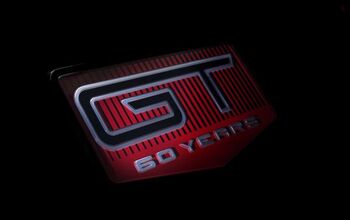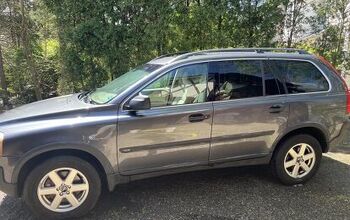The Green New Deal Is Unlikely to Change the Auto Industry Anytime Soon

If you’re freaked out that the so-called Green New Deal will soon render you carless, or perhaps driving an EV against your will, I am here to tell you: Relax.
If you’re hoping the Green New Deal will save the planet from a climate crisis the federal government itself has predicted is just a hair over a decade away, I am here to tell you: Those backing the deal have their hearts in the right place, but their heads in the clouds. Or perhaps somewhere lower and darker.
Let me get a few things straight right off the bat. I believe climate change is real (and a real threat), I believe human actions are a major driver of climate change, and I believe we will, as a society, need to address climate change and do so quickly. I am no climate-change skeptic or denier. And yes, cars and trucks are part of what’s changing the climate.
This means I should’ve been optimistic about the Green New Deal (more formally known as House Resolution 109). A sweeping piece of legislation that addresses the very real challenges we face? One that may even create jobs? Seems like a winner, right?
As you know by now, people freaked when the resolution was released. And not just right-wingers objecting to a piece of legislation because it was introduced by Democrats. Nor was it just climate-change skeptics, or people who acknowledge climate change but believe in limited government regulation. No, even many on the left were verklempt. Why? Because the Green New Deal seemed to call for massive societal change in an extremely short time. Change that on the surface looked heavily restrictive in terms of freedom of choice and movement, not to mention impossible.
People believed the Green New Deal called for the complete substitution of air travel with high-speed rail, and either the banning of internal-combustion engine cars or cars altogether, depending on which hysterical person you read on Twitter.
Never mind that a CNTRL+ F doesn’t find the words cars, trucks, or automobiles anywhere in the doc. Never mind that the doc doesn’t refer to banning cars or even to moving them all to electric. As our frenemies at Jalopnik pointed out, here’s the most relevant passage to cars:
(H) overhauling transportation systems in the United States to remove pollution and greenhouse gas emissions from the transportation sector as much as is technologically feasible, including through investment in— (i) zero-emission vehicle infrastructure and manufacturing; (ii) clean, affordable, and accessible public transit; and (iii) high-speed rail.
(Disclosure: I made minor formatting changes. You can see the full doc here).
As far as I can tell, the doc I am working off of is the original, not a revised version. The words airplane, aircraft, cow, cattle, methane, or cow farts don’t appear either, so the hysteria about banning air travel and cow flatulence seems to be overblown. That’s thanks to later-published FAQs that clouded the issue, about which more later.
The zero-emission line is interesting, however. But it’s followed by the words “infrastructure” and “manufacturing.” So does that mean the resolution’s sponsors are calling for zero-emission vehicles (read: EVs) or simply better infrastructure for supporting zero-emission vehicles? Does it mean that zero-emission vehicles should be manufactured or the manufacturing process should be zero-emission? It should be noted that the overhaul of the transportation section would include investment, with no mention of regulation.
Furthermore, some sections use the phrase “technologically feasible,” suggesting that the authors are at least somewhat aware of reality.
So no, the doc doesn’t call for the banning of cars, or planes, or cars with internal-combustion engines. At most, it calls for zero-emissions vehicles in 10 years. As Jalop points out and every auto industry observer knows, this is unlikely to happen. I believe that someday most of the automotive fleet – save for certain performance vehicles and trucks – will be EV, but that day is a long, long ways away. For EVs to go from under 2 percent market share to the majority of the market in a decade seems like a pipe dream.
Not to mention that even if EVs don’t emit pollution, the manufacturing process does, at least at present.
Automakers have been working on electric vehicles for quite some time now, but there’s several challenges to mass EV adoption that regular readers of this website are all too familiar with. They are, in no particular order: Affordability, charge times, range, charger availability, and consumer fear. Once we have a large amount of EVs available for under $35K, with ranges over 300 miles and charge times measured in minutes not hours, the market will start to turn. We’ll also need a lot more chargers around, and we’ll need to educate consumers better when it comes to EVs.
All of these things will probably happen, but not within a decade.
This isn’t to defend the Green New Deal. It’s light on specifics in some places, and the writers don’t seem to have done their homework on what’s feasible. “Upgrading all existing buildings in the United States and building new buildings to achieve maximum energy efficiency, water efficiency, safety, affordability, comfort, and durability, including through electrification” doesn’t seem feasible to me. The high-speed rail section? No vision laid out beyond “we want more of it.” Do they mean high-speed rail connecting cities 250-300 miles apart, or something else? High-speed commuter rail within metro areas, perhaps?
Zooming out, I am supportive of a few ideas laid out in the resolution, if not the execution. I am in favor of more high-speed rail, especially between cities that lie four or five hours apart by car. I am in favor of more mass transit. That may be weird for a car guy to say, but I like having transportation choice, and if greater availability of mass transit or high-speed intercity rail unclogs our roads and airports a bit, so much the better.
I am also in favor of better infrastructure, and solar and wind energy is promising (if not ready for prime time).
But this resolution, which is almost certainly never going to become law anyway, shoots for the moon.
Which may be the point. One of the sponsors is rookie lawmaker Alexandria Ocasio-Cortez (D-NY 14th District), who is a magnet for attention. She’s a darling of the progressive left and freaks out a good chunk of the right. Maybe I’m a cynic, but perhaps this bill asked for so much so soon because AOC knew it would garner a lot of attention – because she herself attracts so much attention. Perhaps AOC and her co-sponsor (Senator Ed Markey, D-MA) are hoping to only achieve a small percentage of the goals laid out here – the ones that are more realistic and/or appealing to both sides of the aisle. It’s also possible that they aimed high while also not doing their homework – the two aren’t mutually exclusive.
Some of the hysterics came from a FAQ posted by AOC’s office that made reference to farting cows and the speed at which air travel would become a thing of the past. She and her staff later walked much of that back, claiming certain lines in the FAQ were tongue in cheek while also (falsely, according to the Washington Post) claiming some of the misinformation came from “doctored” docs (the Post only found one such doctored document).
Documents were also taken offline in the process of the Green New Deal’s rollout, raising eyebrows.
Good grief. That weirdness won’t help generate reasonable debate.
This resolution is a little bit like the kid who wants a puppy but asks her parents for a pony. Ask for much more than you can realistically get, and it will be easier to achieve the more modest goals.
If I’m right about that, cars, or the internal-combustion engine, aren’t going anywhere anytime soon. Instead, automakers will continue developing EVs, and at some point the market will tip. Zero-emission vehicles are likely a part of the future, and the internal-combustion engine may be someday be history. But not yet, and not because of this resolution.
You can relax now.
[Image: Rachael Warriner/Shutterstock]

Tim Healey grew up around the auto-parts business and has always had a love for cars — his parents joke his first word was “‘Vette”. Despite this, he wanted to pursue a career in sports writing but he ended up falling semi-accidentally into the automotive-journalism industry, first at Consumer Guide Automotive and later at Web2Carz.com. He also worked as an industry analyst at Mintel Group and freelanced for About.com, CarFax, Vehix.com, High Gear Media, Torque News, FutureCar.com, Cars.com, among others, and of course Vertical Scope sites such as AutoGuide.com, Off-Road.com, and HybridCars.com. He’s an urbanite and as such, doesn’t need a daily driver, but if he had one, it would be compact, sporty, and have a manual transmission.
More by Tim Healey
Latest Car Reviews
Read moreLatest Product Reviews
Read moreRecent Comments
- Arthur Dailey 'Ere it's a nice little runner.Actually anyone with my log-in/sign-in name and picture absolutely should not be commenting on this article.
- Arthur Dailey Is the original Legend absolute peak Honda?
- MaintenanceCosts Curb weight of this version is likely north of 4500 pounds. Expect it to feel like a W221 S-Class, not a sporty coupe.
- Parkave231 New Oldsmobiles are in early this year.
- MaintenanceCosts "While there are absolutely exceptions, the days of the super-sleazy used car dealer seem to be behind us here in the States."Citation needed.


































Comments
Join the conversation
The woman is crazy. Send her back to Cuba.
I just read a mind-blowing article on the subject; you can copy and paste the link below into your browser. In short: Lazy analysts may assume the Green New Deal is what divides the Ocasio-Cortezes and Trumps of the world, but in fact it's based on foundational principles that unite them: Alexander Hamilton's vision of industrial policy. The same thing that brought us the transcontinental railroad, the cookie cutter suburb, the home appliance, and the computer. (Or more romantically, the moon shot and World War II mobilization.) It seeks to strengthen and revitalize the domestic manufacturing sector in order to produce something that's ultimately a competitive, environmental, and national security advantage: cheap renewable energy. Whatever side of the fence you sit on, read this article; it will shatter your preconceptions. Seen clearly, the GND actually presents an opportunity to MAGA, and to overcome the overblown divisions among us. https://www.theatlantic.com/science/archive/2019/02/green-new-deal-economic-principles/582943/